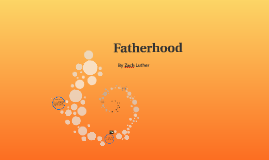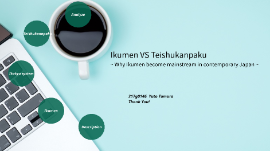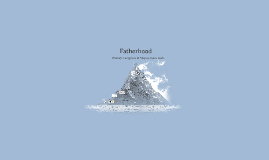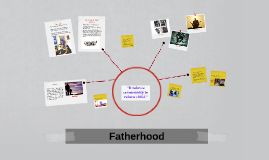Project Fatherhood
Transcript: -Men in Relationships Groups -Individual family counseling -Activity groups for children -Advocacy for fathers in the court system -Links to other programs addressing family needs for food, housing, shelter, and medical assistance. What are some events Project Fatherhood does in communities? Project Fatherhood Project Fatherhood was developed to give urban, culturally diverse fathers an opportunity to connect with their children and play a meaningful role in their lives. The program continues to be recognized nationally for effectively addressing the problem of absentee fathers, a major social issue affecting the healthy development of a significant number of children. Target Population Over his career, Dr. Hershel Swinger had long observed that fathers were most often left out of programs designed to strengthen troubled low-income urban families and prevent child abuse and neglect. But he firmly believed that fathers wanted what was best for their kids. To that end, he devised Project Fatherhood SM to give fathers the tools to participate actively in the rearing and well-being of their children. In 2010, KPI was awarded a grant of $300,000 over a period of three years from Children's Institute, Inc. in order to continue to carry out the mission of Project Fatherhood at the Jordan Downs Public Housing Development. Where is there room for improvement within the program? Anthony Young Project Fatherhood MFT Meets with selected clients to provide therapy services. Worked on coordination of program sponsored conferences. Annual Project Fatherhood Conference Sporting Events Family Days What do you love most about working with Project Fatherhood? How has Project Fatherhood impacted the families you serve? The program provides comprehensive parenting skills to men in care-giving roles including fathers, stepfathers, foster parents and relative caregivers—using an innovative support group model. Since its inception, more than 12,000 fathers and nearly 17,500 children have participated in the program, and the numbers are growing. Seeing positive changes in the fathers. Empowering fathers. Seeing fathers change their outlook on fatherhood and their capabilities to care for their children. Funding Awareness Availability The target population includes fathers who are facing poverty, homelessness, a familial history of single parenthood, violence, physical abuse, substance abuse, recent or long-term lack of employment, or limited experience in interacting with their children. Project Fatherhood Los Angeles, CA Most of the fathers become more actively involved in their children's lives. Fathers have a safe haven of support. Video Participants “Project Fatherhood SM is a grassroots program that can take place in any place, in any community. It directly touches the lives of fathers and their children.” The Inception Services Offered

















